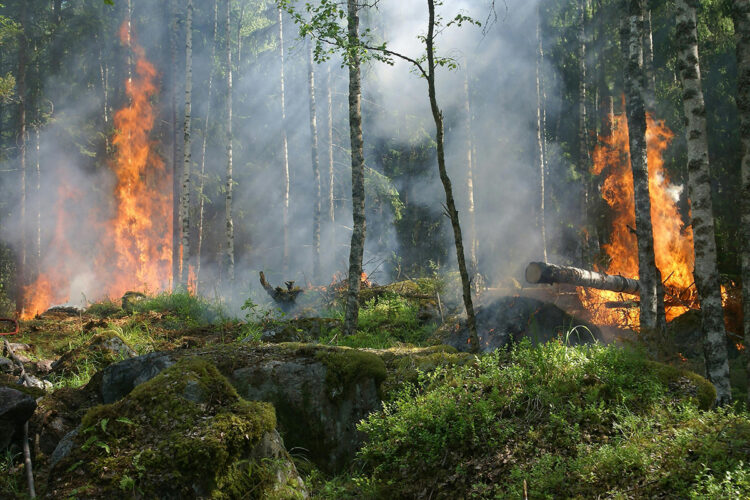
wild fire from vegetation northeast earthtalk
Dear EarthTalk: Are increased shrub and tree plantings in the eastern U.S. in recent decades partially responsible for the recent uptick in wildfires across the region?
—M. Major, New York, NY
Feb. 21. Wildfires are uncontrolled destructive fires that spread over natural areas, like forests or brush. They can happen for many reasons, natural or manmade. Climate change has made wildfires increasingly more destructive throughout the world. One study from the University of Maryland suggests that current wildfires burn nearly six million more hectares of tree cover per year compared to wildfires from 2001.
The eastern U.S. is no exception to this devastation, with certain regions’ wildfire frequencies having grown tenfold in the last 40 years. There are many explanations for this, but one example is flammable resin being applied to forests by timber companies. It is also theorized that increased shrub and tree planting efforts across the eastern United States are contributing to this uptick in major wildfires.
Increasing the odds of fire
Researchers believe that these factors combine to explain increased wildfire odds. Per a recent study led by University of Florida researcher Victoria Donovan, in the east a 1 percent increase in woody cover leads to a 3.9 percent increase in odds of a wildfire the next year. Some recent studies have noted that the planting of invasive species can also increase wildfire frequency. UMass Amherst researchers noted that wildfire occurrences have increased by up to 230 percent because of eight species of nonnative grass.
There are many ways that the average person can help combat wildfires. According to Donovan, reducing fuel usage is the easiest way to prevent wildfires. Supporting climate laws is also vital in achieving environmental justice. Signing the petition led by the Center for Biological Diversity urging FEMA to declare both extreme heat and wildfire smoke as major disasters will support such laws.
Temps actually dropped
Despite research exhibiting a correlation between woody cover and wildfire odds, shrub and tree planting efforts are not in vain. One study published in Geophysical Research Letters noted that the temperature across the east actually dropped by 0.5 degrees F over the last century.
“Some vegetation in those really harsh sites might actually facilitate tree establishment by providing shade,” reports University of California, Davis researcher Derek Young.
Compared to the whole nation, which actually warmed by 1.2 degrees F over the last century, this compelling evidence suggests that the current planting of trees across the east is a step in the right direction in combating global warming.
However, officials also encourage thinning out forests and increasing planting of native vegetation to help prevent more wildfire risk.
CONTACTS: Center for Biological Diversity’s petition to Save People From Deadly Heat and Smoke, https://biologicaldiversity.org/action/alerts/; Assistant Professor Victoria Donovan, https://wfrec.ifas.ufl.edu/directory/dr-victoria-donovan/; Assistant Professional Researcher Derek Young, https://www.plantsciences.ucdavis.edu/people/derek-young.
EarthTalk® is produced by Roddy Scheer & Doug Moss for the 501(c)3 nonprofit EarthTalk. See more at https://emagazine.com. To donate, visit https://earthtalk.org. Send questions to: question@earthtalk.org.




